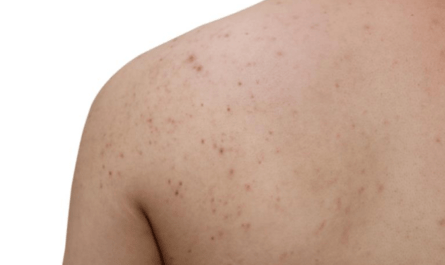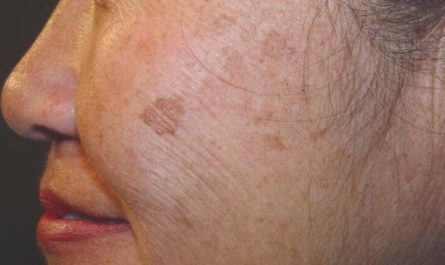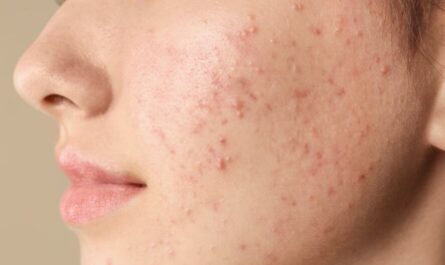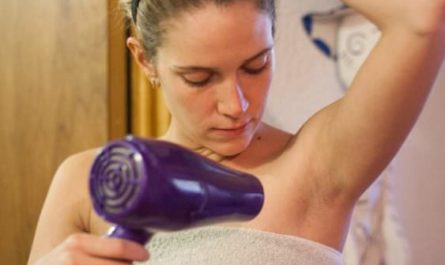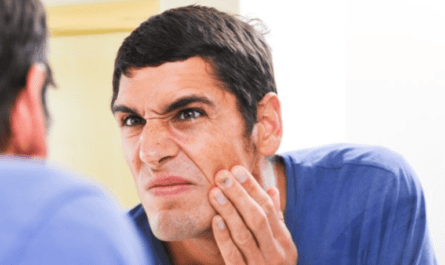Shingles, also called herpes zoster, is a viral infection caused by the varicella-zoster virus. This is the same virus that causes chickenpox. This virus is hard to remove and can remain in your nervous tissue for a long time, even after successfully treating chickenpox.
According to the Centers for Disease Control, millions of people in the United States are reported to have it every year. And 30% of people will suffer from shingles in their lifetime. The vast majority of them are older people over the age of 60.
Usually, shingles occur when the virus becomes triggered again. In addition, the varicella-zoster virus can also result in chickenpox and cold sores. Luckily, getting vaccinated and following good hygiene practices can help reduce your risk of developing shingles. If you experience any symptoms, be sure to contact your doctor immediately.
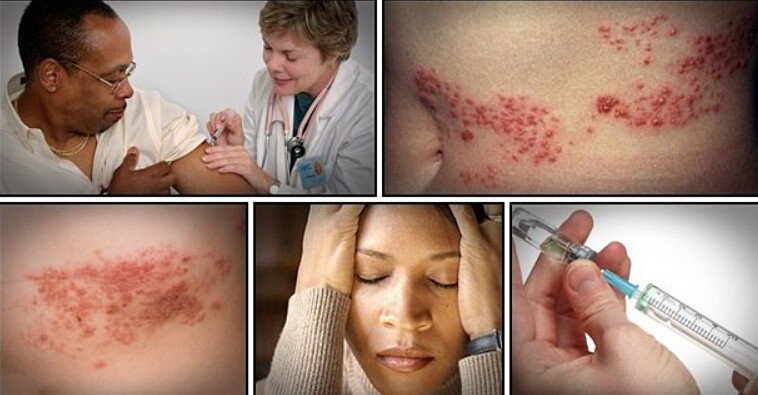
Common Symptoms of Shingles
The most common symptom of shingles is red, itchy, and painful rashes, which are smallpox marks that often occur on the buttocks, lower back, neck, cheeks, trunk, or face. It can also spread anywhere on your body.
The rashes come in patches, and this makes the rashes highly noticeable. When the rashes become blisters filled with fluid, you may feel extremely itchy and painful. The rashes may disappear completely within 5-6 weeks. Other common symptoms include fatigue, body pain, fever, headaches, dizziness, and sensitivity to light.
Common causes of shingles
Common causes of shingles include:
- Age: As people age, their immune systems weaken, making them more susceptible to the virus.
- Stress: Stress can weaken the immune system and make a person more likely to develop shingles.
- Illness: Certain illnesses, such as HIV or cancer, can weaken the immune system and make someone more likely to develop shingles.
- Medication: Certain medications, such as steroids and certain chemotherapy drugs, can weaken the immune system and make someone more likely to develop shingles.
- Weakened Immune System: A weakened immune system can make someone more likely to develop shingles. This can be caused by several things, such as chronic illness, HIV, diabetes, or certain medications.
- Family History: People with a family history of shingles are more likely to develop the condition.
- Exposure: People exposed to someone with chickenpox or shingles may be more likely to develop the condition.
14 Best Home Remedies to Get Rid of Shingles
1. Oatmeal
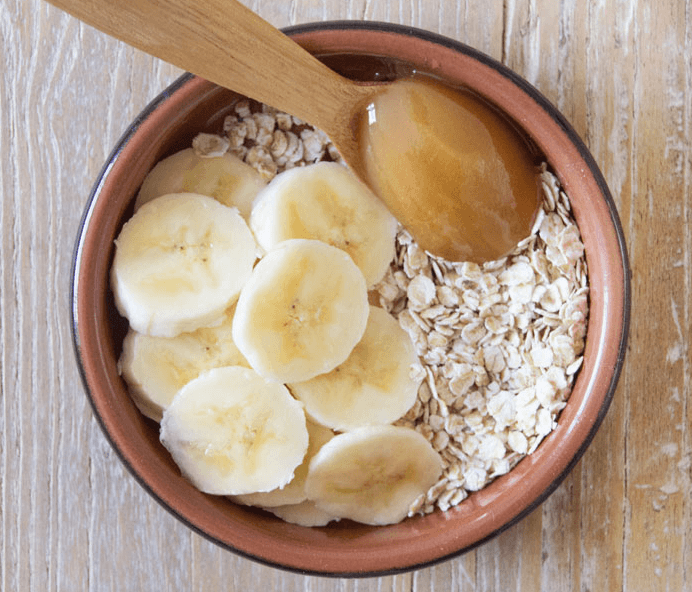
Are you aware that oatmeal can easily remove your shingles? Oatmeal has soothing and anti-irritant properties that can help relieve pain, irritation, and constant itching accompanied by shingles.
Option 1:
- Add 2 cups of oatmeal powder to the tub filled with lukewarm water.
- Soak yourself in the water for 15-30 minutes.
- You can do this every day before you go to bed.
Option 2:
- Mix one tablespoon of finely powdered oatmeal with plenty of water to make a paste.
- Apply this paste to your affected area, dry it, and wash it off with warm water.
- You can do this 2-3 times daily for 1-2 weeks.
2. Aloe Vera

Aloe Vera is an effective solution for treating shingles and shingles scars. It has antiviral and antifungal properties that can cool and soothe the infected skin area to remove the irritation, itching, and burning sensation. It can also help improve the healing process.
- Extract Aloe Vera gel from a fresh Aloe Vera leaf.
- Apply the fresh Aloe Vera gel to the areas and rub gently following a circular motion.
- Massage the Aloe Vera on the area and wait for it to dry for a few minutes.
- Rinse off after half an hour with cold water.
- You can do this 2 – 3 times daily to get a good result soon.
3. Honey
Honey is not only tasty but also useful for the treatment of shingles. It has antibacterial and wound-healing properties, which can help naturally remove the pain and irritation of blisters. It can also soothe the skin and eliminate the shingle’s scars.
- Place honey on a clean cloth or bandage, then put it on your infected area.
- Make sure that you will cover all of the areas quite well.
- Keep it there for as long as you can.
- If the honey dries up, you must replace it with fresh honey every few hours.
- Do these processes until your condition is better.
You can also add honey to your diet, which can help improve your immune system for faster recovery. One tablespoon of raw honey daily is enough.
4. Green Tea

The great thing about green tea is that many people like it a lot. Some people take it before going to work in the morning. If you have never taken green tea before, you have to know that this can be very effective in getting rid of shingles because of its antiviral properties. It can help kill the virus-causing shingles, which will eventually make them go away.
- Make sure you include green tea when you wake up in the morning.
- You are recommended to drink green tea about four times a day so that it can heal you from the inside.
5. Garlic
Garlic is one of the most effective solutions for many skin infections, such as shingles. It has antiviral properties that can help kill bacterial viruses, parasites, and fungi that cause shingles. It also helps heal the shingles and remove the itch and pain.
- Get five cloves of garlic and mash it until you get a paste.
- Place the garlic paste on the area afflicted with shingles.
- Leave on the skin for about 5 minutes. Make sure not to leave it longer because this might burn your skin.
- Wash off with warm water.
- Do this 1-2 times a day for 1-2 weeks.
- You can also eat 3-4 cloves of raw garlic daily to get a better result.
6. Acetone
You may be surprised to see acetone here since you may probably know acetone as something that you can use to get rid of shingles because it can dry off the skin and kill the virus at the same time.
- Place the acetone on a clean cotton ball.
- Place it on the skin affected by shingles.
- Leave the acetone on the shingles for about 10 – 15 minutes.
- Wash off thoroughly with water.
7. Sea Salt
Sea salt has antiseptic properties that can be very helpful in soothing the itchy feeling of shingles. It can also help dry the blisters and increase the healing process.
- Mix one tablespoon of sea salt with ½ cup of plain water.
- Soak a cotton ball in the water and place it on your affected area.
- You can repeat this process 1-2 times daily for one week.
- You can add 1 cup of sea salt to the bathwater and soak yourself in for 30-40 minutes daily for a better result.
8. Apple Cider Vinegar
Apple cider vinegar is another effective way to get rid of shingles. It is a natural antiviral and disinfectant. It has antimicrobial and astringent properties that can help dry out sores, relieve itching, and improve your recovery process.
- Mix one teaspoon of apple cider vinegar and two teaspoons of pure water.
- Dip a cotton ball in the mixture and apply it to the affected skin area.
- Wait 10-20 minutes until it dries, and wash it off with water.
Do this 2-3 times a day until your problems go away.
Add one teaspoon of apple cider vinegar and one teaspoon of honey to a cup of hot water. Then, drink this thrice daily after meals for 1-2 weeks.
9. Cool Water Baths
Soaking in a cool water bath or taking a cool shower for about 15 minutes can help alleviate the pain and itchiness caused by shingles.
It is important to use a fragrance-free cleanser and avoid scrubbing the blistered areas too hard. After bathing, gently pat the rash dry with a clean cotton towel.
10. Cool Compresses
Using cool compresses on the affected areas can help alleviate pain, burning sensation, itching, and inflammation associated with shingles. Simply wet a clean washcloth with cool water and apply it to the rash for a few minutes at a time.
Using a new washcloth for each application can help prevent infection. Some experts suggest adding a diluted white vinegar solution to the cool compress to soothe the pain from shingles blisters.
However, it is important to consult with a dermatologist before using vinegar for cold compresses to ensure its safety and effectiveness.
11. Proper Diet
Eating a nutritious diet is essential for a strong immune system and promoting healing. Foods that can help boost the immune system and promote healing. These foods include lean meats, whole grains, nuts, legumes, orange foods, red foods, fruits high in vitamin C, and foods rich in vitamin B.
On the other hand, certain foods can hinder the healing process and worsen inflammation. It is advisable to avoid or limit consumption of white sugar, high fructose syrups, trans fats, saturated fats, and salty foods.
12. Stress Management
Managing stress is crucial for overall well-being and can also aid in the recovery from shingles. Engaging in stress-reducing activities such as meditation, deep breathing exercises, yoga, and spending time in nature can help alleviate stress and promote healing.
13. Essential Oils
Certain essential oils and herbal remedies have been used to alleviate shingles symptoms. It is important to note that essential oils can be harsh on the skin and may cause allergic reactions.
It is advisable to dilute them properly and consult with a healthcare provider before using them. Some essential oils and herbal remedies that have been used for shingles include:
- Topical licorice: Studies have found that licorice oil may inhibit the replication of the varicella-zoster virus in test tubes, but more research is needed to confirm its effectiveness in humans.
- Gentiana scabra: This oil has anti-inflammatory properties and has been shown to resolve pain more effectively than traditional pain medications given for postherpetic neuralgia, a long-term complication of shingles.
- German chamomile oil: German chamomile mixed with L. angustifolia in a 50:50 ratio has been shown to improve pressure sores and leg ulcers.
- Eucalyptus oil: Eucalyptus oil has anti-inflammatory properties and has shown antiviral activity against herpes virus infections.
- Tea tree oil: Tea tree oil has anti-inflammatory, antimicrobial, and wound-healing properties. While most research is focused on its effectiveness against herpes simplex, more studies are needed to determine its safety and effectiveness for treating shingles.
14. Lotions and Creams
There are various over-the-counter lotions and creams that can be used to alleviate shingles symptoms. These include:
- Petroleum jelly: Applying a thin layer of clean petroleum jelly after washing the rash can help keep the skin moisturized and promote healing. Cover the rash with a non-stick bandage after applying petroleum jelly.
- Calamine lotion: Once the blisters have scabbed over, applying calamine lotion can help reduce itchiness.
- Antihistamine cream: An alternative to calamine lotion, antihistamine cream can be used to reduce itching. However, it is important to consult with a dermatologist before applying it to open blisters.
- Antibiotic ointment: If the shingles rash becomes infected, applying antibiotic ointment can help treat the infection. It is recommended to consult with a healthcare provider before using antibiotic ointment on open areas of the rash.
- Zostrix HP: This cream contains capsaicin, an extract of cayenne pepper, which can lower pain perception levels when used consistently. It is important to note that this cream should only be used once the shingles rash has crusted over.
Are shingles contagious?
Shingles are not as contagious as highly contagious chickenpox. Chickenpox can be inherited from the baby in its early months. However, shingles are contagious too. You’d better avoid exposing your virus to others.
Before treatment, you must understand that shingles are viral infections that can not be treated with antibiotics. Antiviral medication usually treats only rashes on the skin. However, with some natural home remedies, you can remove the shingles and shingles pain. Here are the top 10 home remedies to get rid of shingles fast.
How long does it take for shingles to go away?
According to statistics, the blisters of shingles are usually crusted within 7 to 10 days and then clear entirely after 3 to 5 weeks. You may initially feel burning or tingling pain accompanied by numbness or itching. Then after 1 to 5 days, the burning feeling will go away, but a red rash may appear on the skin.
When to see a doctor?
It is important to contact your doctor if you experience any of the following symptoms:
- A burning, stabbing, or tingling sensation on one side of the body
- A red rash that forms a band or a strip
- Blisters that eventually form scabs
- Pain, itching, or tingling in areas of the skin that are not accompanied by a rash
- If you have a rash that does not heal after several weeks
If you are experiencing any of the above symptoms, it is important to contact your doctor as soon as possible. They can diagnose and provide treatment to reduce the severity of symptoms and prevent complications.

